TEST Maja Bosanac has published 66 articles.
Articles written by Maja Bosanac
Bionics»
Novel bio-inks can be used to print various types of tissue
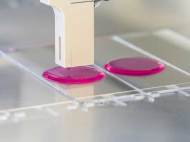 A group of researchers at the Fraunhofer Institute have succeeded in developing bio-inks for tissue printing technology. The transparent liquids consist of components from the natural tissue matrix and living cells, such as a well known biological material – gelatin. By controlling the chemical modification of this biomolecule, researchers can imitate the properties of various… »
A group of researchers at the Fraunhofer Institute have succeeded in developing bio-inks for tissue printing technology. The transparent liquids consist of components from the natural tissue matrix and living cells, such as a well known biological material – gelatin. By controlling the chemical modification of this biomolecule, researchers can imitate the properties of various… »
Tech»
Novel solar-microbial device harnesses sun and sewage to produce hydrogen
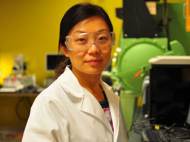 Collaboration between researchers at the University of California Santa Cruz (UCSC) and researchers at Lawrence Livermore National Laboratory (LLNL) resulted in development of a solar-microbial device that produces hydrogen gas and electricity using sunlight and wastewater as the only energy sources. By combining solar and microbial technology, it provides a sustainable energy source while improving… »
Collaboration between researchers at the University of California Santa Cruz (UCSC) and researchers at Lawrence Livermore National Laboratory (LLNL) resulted in development of a solar-microbial device that produces hydrogen gas and electricity using sunlight and wastewater as the only energy sources. By combining solar and microbial technology, it provides a sustainable energy source while improving… »
Robotics»
JEROS – swimming robot that controls overpopulated jellyfish population
 A group of researchers at the Korea Advanced Institute of Science and Technology (KAIST) has developed a jellyfish removal robot named Jellyfish Elimination Robotic Swarm (JEROS). This cooperative robot is designed to patrol the seas in swarms in order to detect and destroy jellyfish swarms. After four years of development, JEROS recently successfully finished its… »
A group of researchers at the Korea Advanced Institute of Science and Technology (KAIST) has developed a jellyfish removal robot named Jellyfish Elimination Robotic Swarm (JEROS). This cooperative robot is designed to patrol the seas in swarms in order to detect and destroy jellyfish swarms. After four years of development, JEROS recently successfully finished its… »
Tech»
TransWall – transparent glass as interpersonal communication medium
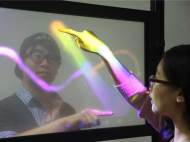 A group of researchers at the Korea Advanced Institute of Science and Technology (KAIST) has developed a novel multi-sensory game media named “TransWall”, which utilizes both sides of the transparent glass wall as the touch medium. It enables people to see, hear, or even touch other people through the wall while enjoying gaming and interpersonal… »
A group of researchers at the Korea Advanced Institute of Science and Technology (KAIST) has developed a novel multi-sensory game media named “TransWall”, which utilizes both sides of the transparent glass wall as the touch medium. It enables people to see, hear, or even touch other people through the wall while enjoying gaming and interpersonal… »
Bionics»
More efficient and cell-free production of biomolecules
 Scientists and engineers from eight Fraunhofer Institutes have joined forces in an interdisciplinary research project to develop bioreactors that produce proteins without the help of intact cells. It can also function without viable, genetically modified cells or organisms. This cell-free bioproduction could help produce biological ingredients more quickly and with fewer resources than current conventional… »
Scientists and engineers from eight Fraunhofer Institutes have joined forces in an interdisciplinary research project to develop bioreactors that produce proteins without the help of intact cells. It can also function without viable, genetically modified cells or organisms. This cell-free bioproduction could help produce biological ingredients more quickly and with fewer resources than current conventional… »
Tech»
Lasers test potable water automatically on the spot
 Researchers at the Fraunhofer Institute have used a quantum cascade laser, a particular type of infrared laser, in analysis equipment that can automatically test samples of drinking water for contaminants. This technology analyzes water samples at the waterworks itself, and it needs only a couple of minutes to determine whether water contains any impurities and… »
Researchers at the Fraunhofer Institute have used a quantum cascade laser, a particular type of infrared laser, in analysis equipment that can automatically test samples of drinking water for contaminants. This technology analyzes water samples at the waterworks itself, and it needs only a couple of minutes to determine whether water contains any impurities and… »
Bionics»
New genetic-modification approach could eliminate sleeping sickness
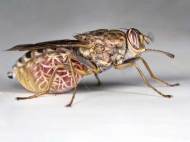 Researchers at the Oregon State University (OSU) have devised innovative approach that could reduce or even eliminate the deadly disease African trypanosomiasis (sleeping sickness), which was shown in a recent mathematical modeling study. They developed genetic-modification strategies to reduce the transmission of sleeping sickness, but this method appears as a promising strategy for reducing the… »
Researchers at the Oregon State University (OSU) have devised innovative approach that could reduce or even eliminate the deadly disease African trypanosomiasis (sleeping sickness), which was shown in a recent mathematical modeling study. They developed genetic-modification strategies to reduce the transmission of sleeping sickness, but this method appears as a promising strategy for reducing the… »
Bionics»
Researchers pinpoint how some plants fix nitrogen while others do not
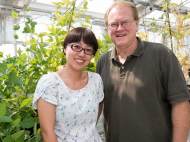 Most of legume species, plants in the family Fabaceae (Leguminosae), live in symbiotic relationships with nitrogen-fixing bacteria (rhizobia bacteria). The bacteria receive food from plant, and in turn the bacteria fix the nitrogen that most plants need to grow green and healthy. Researchers at the University of Missouri have found that nonlegumes plants respond to… »
Most of legume species, plants in the family Fabaceae (Leguminosae), live in symbiotic relationships with nitrogen-fixing bacteria (rhizobia bacteria). The bacteria receive food from plant, and in turn the bacteria fix the nitrogen that most plants need to grow green and healthy. Researchers at the University of Missouri have found that nonlegumes plants respond to… »








